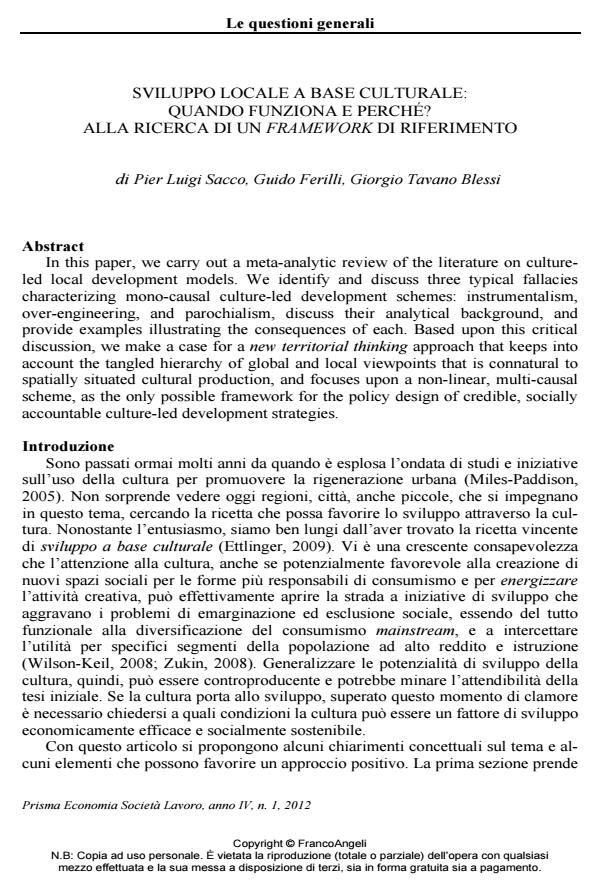Sviluppo locale a base culturale: quando funziona e perché? Alla ricerca di un framework di riferimento
Journal title PRISMA Economia - Società - Lavoro
Author/s Pier Luigi Sacco, Guido Ferilli, Blessi Giorgio Tavano
Publishing Year 2013 Issue 2012/1
Language Italian Pages 19 P. 9-27 File size 664 KB
DOI 10.3280/PRI2012-001003
DOI is like a bar code for intellectual property: to have more infomation
click here
Below, you can see the article first page
If you want to buy this article in PDF format, you can do it, following the instructions to buy download credits

FrancoAngeli is member of Publishers International Linking Association, Inc (PILA), a not-for-profit association which run the CrossRef service enabling links to and from online scholarly content.
In this paper, we carry out a meta-analytic review of the literature on cultureled local development models. We identify and discuss three typical fallacies characterizing mono-causal culture-led development schemes: instrumentalism, over-engineering, and parochialism, discuss their analytical background, and provide examples illustrating the consequences of each. Based upon this critical discussion, we make a case for a new territorial thinking approach that keeps into account the tangled hierarchy of global and local viewpoints that is connatural to spatially situated cultural production, and focuses upon a non-linear, multi-causal scheme, as the only possible framework for the policy design of credible, socially accountable culture-led development strategies.
- Enabling real property. How public real estate assets can serve urban regeneration Ezio Micelli, in TERRITORIO 87/2019 pp.93
DOI: 10.3280/TR2018-087015 - Abandoned Buildings in Contemporary Cities: Smart Conditions for Actions Alessia Mangialardo, Ezio Micelli, pp.19 (ISBN:978-3-030-35549-4)
Pier Luigi Sacco, Guido Ferilli, Blessi Giorgio Tavano, Sviluppo locale a base culturale: quando funziona e perché? Alla ricerca di un framework di riferimento in "PRISMA Economia - Società - Lavoro" 1/2012, pp 9-27, DOI: 10.3280/PRI2012-001003